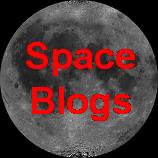Look up at wide-open space with rose-coloured glasses and there's a potential utopia - lots of room for everybody. The reality is that space will be colonised for the same reason the 'new world' was - proximity to resources - the moon and near-earth asteroids in this case. Only certain locations can be colonised profitably.
We tend to think of the technologies and concepts we use today as 'new' but, as usual, we stand on the shoulders of the giants who came before us.
In 1772 an Italian-French mathematician named Lagrange showed that there are five Libration points where, given two massive bodies in circular orbits around their common center of mass (e.g. the Earth and the Moon), there are five positions in space where a third body of comparatively negligible mass could be placed and maintain its position relative to the two massive bodies. These points have the peculiar property of allowing objects to orbit around them even though there is no material object nearby.
The Earth-Moon L1, L2, and L3 points lie on a line connecting the Earth and Moon. They are stable only in the plane perpendicular to the line between the two bodies. If an object located at one of these points drifted closer to one of the masses, the gravitational attraction it felt from that mass would be greater, and it would be pulled out of orbit.
The other two are L4 and L5. They lie at equal distance from Earth and Moon, in the Moon's orbit, thus forming equilateral triangles with Earth and Moon such that the libration point is ahead of (L4), or behind (L5), the smaller mass in its orbit around the larger mass.
L5 is the only one to have its own song (Home on Lagrange (The L5 Song) © 1978 by William S. Higgins and Barry D. Gehm).
The reason these points are in balance is that at L4 and L5, the distances to the two masses are equal. Accordingly, the gravitational forces from the two massive bodies are in the same ratio as the masses of the two bodies. While a colony could not be placed directly at L4 or L5, it could be placed in an orbit around one of these points that keeps the colony about 90,000 miles from its central libration point.
Several NASA missions are stationed at or use Lagrange Points and clouds of dust, called Kordylewski clouds, even fainter than the notoriously weak gegenschein (sunlight reflected by interplanetary dust), are also present in the L4 and L5 of the Earth–Moon system.
The diagram to the right is from a 1975 NASA Publication: Space Settlements: A Design Study. Quoting from page 175: "An upper limit to the speed of growth of space colonization is estimated by assuming 3 years for the duplication of a habitat by a workforce equivalent to 12 percent of a habitat's population. Only 56 years are required at this rate for the construction of communities in space adequate to house a population equal to that of the Earth today."
--PB--
[N.B. I decided not clutter this post with links but it was mainly drawn from these: Wikipedia: LaGarangian Point, National Space Society]

Labels: space colonisation, space commercialisation, space tourism









 Latest Space Elevator Headlines by Google News™
Latest Space Elevator Headlines by Google News™